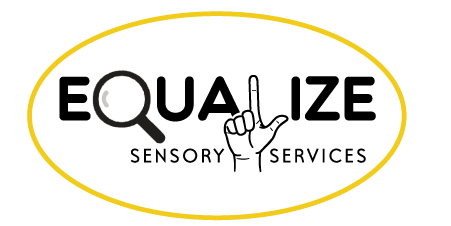Demystifying the Cochlear Implant
By Jillian Morency, Teacher of the Deaf/Hard of Hearing, Equalize Sensory Services
What is a Cochlear Implant?
A Cochlear Implant is a device that improves hearing for individuals with severe to profound hearing loss resulting from inner-ear damage (Mayo Clinic).
How Does it Work?
Rather than simply amplifying sound, the cochlear implant is able to bypass damaged or missing sensory hair cells within the inner ear to deliver electronic sound signals to the auditory nerve in the brain. It consists of two main parts: first, the external Sound Processor, which is worn behind the ear and attaches to a magnet placed below the skin. Second, the internal portion which includes an electrode array that is placed surgically and extends into the cochlea within the inner ear (Cochlear).
What Can it Do?
The cochlear implant receives sound signals from the sound processor and transmits them to the auditory nerve, from there the brain will interpret those signals as sounds. Cochlear implants can increase a person’s ability to hear speech without needing to read lips or use visual cues. They can help detect and locate the source of everyday environmental sounds. Cochlear implants may improve listening in noisy environments, improve perception of music, telephone, and television (Mayo Clinic).
What it Can’t Do:
The cochlear implant cannot directly replace typical hearing. It takes time for the brain to learn how to interpret the signals provided by the implant. The cochlear implant cannot make up for lost time or missed schematics developed by life experiences and incidental learning. Success with a cochlear implant is influenced by many factors, including the age at which a child is implanted as well as whether the child had any auditory access prior to implantation.
For example, if a child had typical hearing as an infant and toddler, but lost hearing due to illness or a progressive hearing loss, he or she would likely have acquired some listening and language skills prior to the hearing loss. Therefore, the brain will have a reference point for many sounds and may be able to decode the sounds provided by the cochlear implant more quickly. If a child is implanted later in life and did not have adequate residual hearing prior to implantation, he or she will essentially be learning about speech and environmental sounds from scratch.
Other factors to success include, but are not limited to: 1. The quality and frequency of early listening and spoken language intervention. 2. Consistency of use and quality maintenance of equipment. 3. Family support 4. Presence of multiple challenges or language processing disorders. 5. School based supports and accommodations.
How to Help Cochlear Implant Users:
- Implement the classroom accommodations listed in the IEP which may include: consistent use of an FM/ALD system, preferential seating, pre-teaching and re-teaching key concepts and vocabulary, providing visual lists, outlines, gaining the student’s attention before speaking, maintaining a quiet classroom environment, checking for comprehension by asking open-ended questions, providing extended processing time and many more —depending upon the unique needs of the student.
- Request 1:1 or small group instruction from a Teacher of the Deaf and Hard-of-Hearing, who can assess the unique needs of the student and create appropriate goals, curriculum and accommodation suggestions to assist in the student’s ability to access the curriculum presented within the general education setting.
- For new cochlear implant users, a Teacher of the Deaf and Hard-of-Hearing can also provide 1:1 auditory therapy designed to increase detection, sound discrimination, locating sound source, vocabulary and concept building, processing of auditory information, auditory memory and retention, self-advocacy and many other skills that cochlear implant users need to help their brain process the sound signals that are so new to them.
Equalize Sensory Services is available to help your students and educational team with services related to the use of a cochlear implant. For more information, contact us through our website at www.equalizeservices.com.

